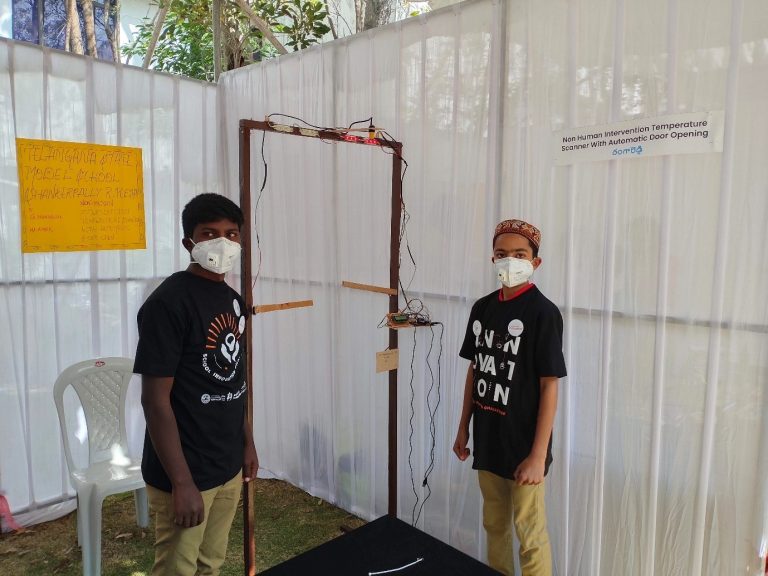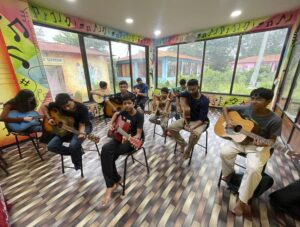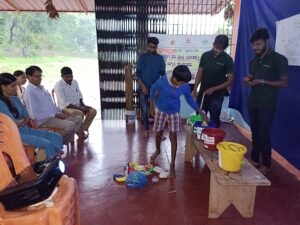Compulsory checking of body temperature at public entry points has been a widely adopted measure in the efforts to control the COVID-19 pandemic. Fever is a common early symptom of COVID-19, and the most frequent mode of transmission is close contact with infected individuals. Thus, temperature screening can identify possible cases of COVID-19 and protect healthy people from getting infected.
It is common to see security staff pointing handheld contactless infrared thermometers, or ‘temperature guns’, at people walking into airports, railway stations, hospitals, Government buildings, business establishments and apartment complexes. However, those who operate such devices also run the risk of being infected. A temperature gun does not touch the person being screened, but still has to be held close to his/ her body. Usually, its detection range is far less than the 1-metre minimum physical distance recommended by World Health Organization (WHO) for preventing COVID-19 transmission.
A safer alternative is an unmanned walk-through gateway with a thermal detector apparatus. Such state-of-the-art products are available in the market, and typically come at far higher prices than the manually-operated devices. Remarkably, though, the state-run TMS School in Shankarpally, Telangana, has managed to install such an unmanned screening doorway at a nominal cost. It has been built by Mohammed Amer and Nandeesh, two Grade 10 students of the institution. If the body temperature is within the permitted range, the gate opens and allows the visitor to walk through. If the reading is higher than the threshold value, entry is automatically blocked.
The innovative low-budget mechanism has no need for human intervention, and does not expose security staff to the risk of contracting the virus. Mohammed Amer and Nandeesh credit this achievement to the training and mentoring in STEM (Science, Technology, Engineering and Mathematics) that they have received through a program supported by Government of India’s NITI Aayog, corporate leader CGI and the non-profit organization Learning Links Foundation.
This ground-breaking initiative has helped many students to gain hands-on learning about subjects like design thinking, computational thinking, robotics and coding. It has encouraged them to discover their hidden potential for creative thinking and collaborative problem-solving. It has provided Do It Yourself (DIY) kits, so that the students can ideate, experiment and build innovative projects by using the latest technologies. Earlier, the two young inventors from Shankarpally had created an automatic sanitizer sprayer for their school; but they wanted to do something more. In the words of Mohammed Amer, “We understood that temperature screening was really important to keep a check on the spread of the virus. Hence, we made this and will continue to think and create more”.
Their model of the automated thermal scanner was showcased at the School Innovation Challenge (SIC) and received appreciation from many quarters, including Ministers from the state Government and many experts. When futuristic technologies meet imagination and critical thinking within inspired young minds, the picture of the twenty-first century looks much brighter. The way forward is through partnerships like the one that has enabled this program—bringing together the public, private and social sectors with stakeholders in education; sharing knowledge, expertise and resources to help in achieving a better future for all.





